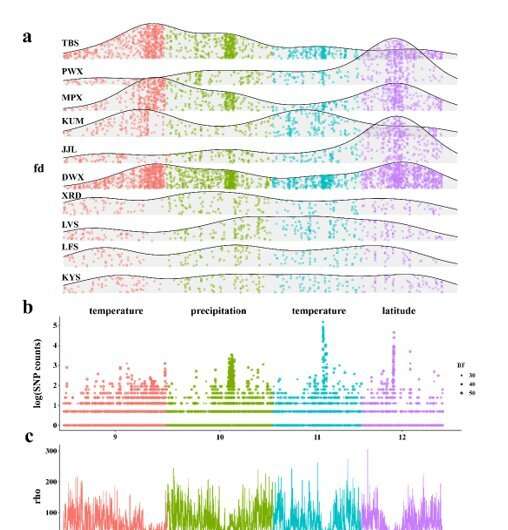Genome-wide introgression between two sympatric Asian oak species

The genus Quercus, commonly known as oaks, is one of the most evolutionarily successful genera in the Northern Hemisphere in terms of species diversity, biomass and distribution range. Oaks can usually live up to a few hundred years, and during the long lifespan they exhibit high tolerance to various abiotic and biotic threats. Meanwhile, oaks are also well known for their extensive interspecific gene flow, which is believed to be helpful for their wide dispersal. These traits make Quercus an ideal genus for studying adaptive introgression.
Recently, the research team led by Prof. Chen Jun at the Zhejiang University College of Life Sciences published an article entitled "Genome-wide analyses of introgression between two sympatric Asian oak species" in Nature Ecology & Evolution. Their research focused on two sympatric Asian oak species of wide distribution ranges—Quercus acutissima and Q. variabili—to explore how introgression can assist with rapidly adapting to various environmental conditions.
In this study, Ph.D. students collected samples in 15 provinces of China and generated a chromosomal-level genome assembly of high-quality, population genomic re-sequences and transcriptome data to investigate the correlation between introgression patterns, the recombination rate, genetic variations of local adaptation, and gene expression regulation.

Introgressed regions across the genome were found to be mainly determined by genetic divergence and environmental conditions. The more similar their environment, the more likely the two oak species were to exchange in the same genomic regions. Adaptive introgressed mutations were maintained by natural selection in four long chromosomal stretches due to suppressed recombination rate, which may be caused by chromosome inversions induced by the insert of transposable elements. Most adaptive introgressed mutations were located in cis-regulatory elements formed by TE insertions and changed gene expression level in response to environmental stimulus. In summary, similar environmental conditions led to similar genetic exchange and to similar expression profiles between oaks.
This study provides a new insight into the genetic mechanisms of introgression and environmental adaptation in sympatric species.
More information: Ruirui Fu et al, Genome-wide analyses of introgression between two sympatric Asian oak species, Nature Ecology & Evolution (2022). DOI: 10.1038/s41559-022-01754-7
Journal information: Nature Ecology & Evolution
Provided by Zhejiang University

















